Introduction to the Geological Features of the Moon
About the author

Anonymous
Introduction
The Moon is the only natural satellite of the Earth and formed at about the same time, over four and a half billion years ago, but has not evolved in the same way. Lacking an atmosphere, water and life, and having cooled more rapidly due to its smaller size, much of the surface has not been changed significantly for billions of years.
This article provides a brief introduction to the types of geological feature to be found on the Moon, to assist in any comparison with other planets and to help the reader decide whether there are any topics they would like to investigate further.
Large scale features
The largest features visible are the bright, heavily cratered areas known as the terrae (Latin for "land") and the dark, relatively smooth and lightly cratered areas called the maria (Latin for "sea", singular "mare"). These are shown in Figure 1.
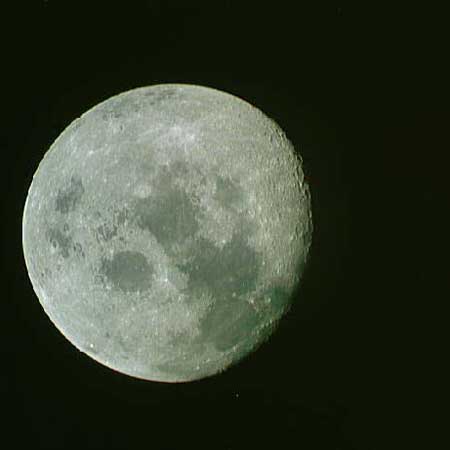
Figure 1: The Moon seen from Apollo 1, clearly showing the terre and mares.
Impact Craters
Impact craters are the dominant landform, and span the entire range of sizes from fractions of millimetres to thousands of kilometres in diameter. An individual crater will show a number of different deposits and characteristics depending on its size and level of erosion. These include ejected blocks, raised rims, hummocks, impact melt, wall slumps, terraces, flows, channels, floor fractures, central peaks, peak rings, rays, secondary craters and crater chains. The small crater below (Fig. 2) shows as a bowl with a sharp rim crest, bright continuous ejecta and bright rays.
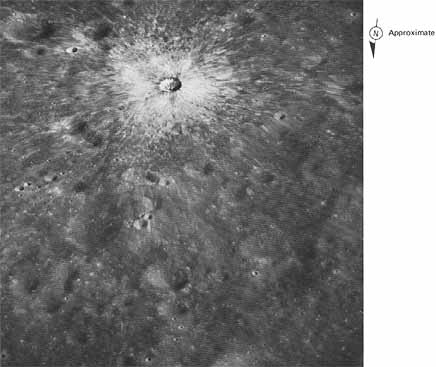
Figure 2: 3 km diameter crater
Smooth material, possibly impact melt, has flowed away from the rim crest of this larger crater (Fig. 3).
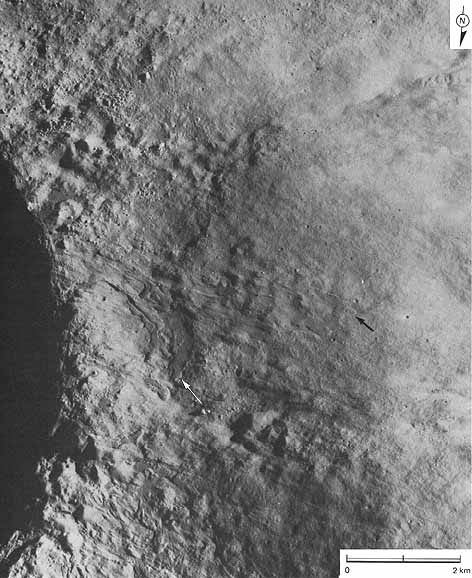
Figure 3: Flows on rim of 14 km crater
Secondary craters, produced by ejecta from larger primary impact craters, often form chains or clusters (Fig. 4).
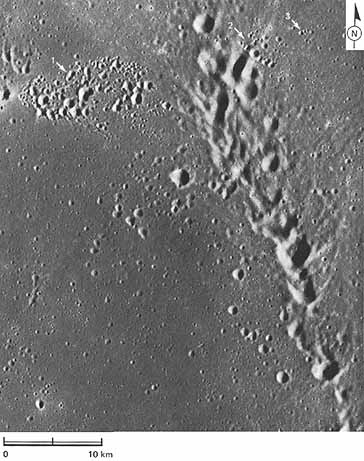
Figure 4: Chain of secondary craters
The impact craters below, formed on a mare surface, show internal slump terraces and concentric arrangements of different types of ejecta deposit (Fig. 5).

Figure 5: 27 km and 19 km craters with the larger crater showing slumping inside the crater.
Craters may be modified after their initial formation. In this case, uplift of the floor of this 200 km crater (Fig. 6) appears to have resulted in cracks and fissures.
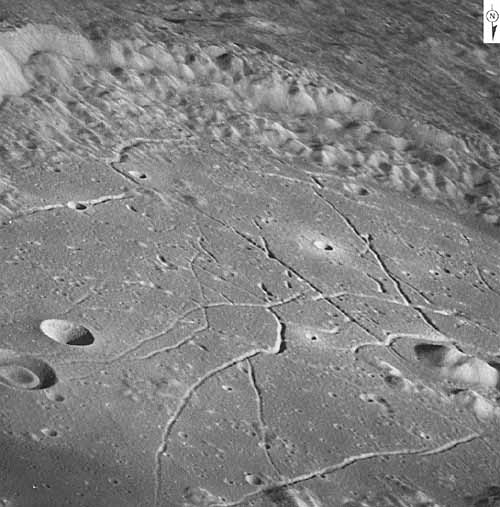
Figure 6: Fissured crater floor
As they get larger, craters develop central peaks, rings and eventually multiple rings, as in the case of the Orientale Basin below (Fig. 7).
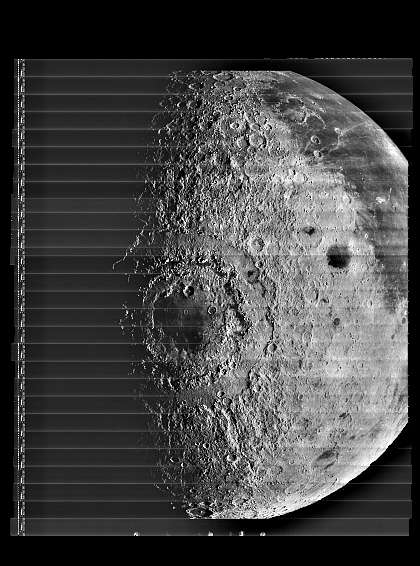
Figure 7: Orientale Basin
Volcanic and Tectonic Features
The smooth mare plains are formed by the filling of depressions, particularly large basins, by basaltic lava that has been erupted from deep within the Moon. Notable features include wrinkle ridges, volcanic domes and sinuous rilles. Tectonic features include faults and graben (fault bounded trenches). An example of lava flows is shown below (Fig. 8), with flows extending from bottom left to top right, and wrinkle ridges crossing in the centre.
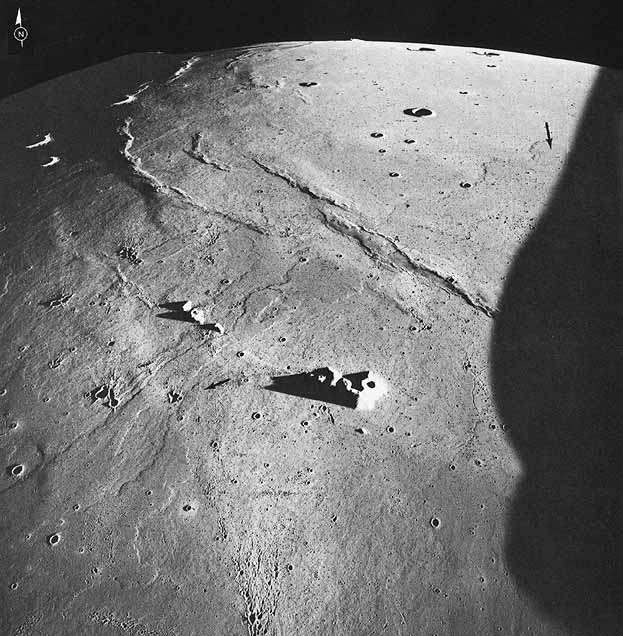
Figure 8: Lava flows and wrinkle ridges
Wrinkle ridges are believed to be caused by compressional forces as the dense lava filling a basin settles (Fig. 9).
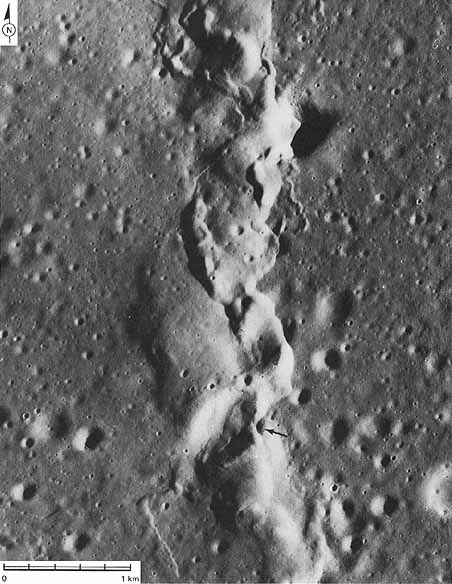
Figure 9: Close up of wrinkle ridge
The winding channels below (Fig. 10) have probably been created by flowing lava, although sudden changes in direction may be influenced by faults.
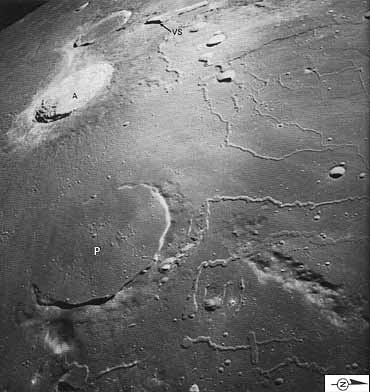
Figure 10: Sinuous rille. The bright crater is 43 km wide.
In this feature (Fig. 11) a highly winding channel is contained within a broader valley, itself cut into a lava plain.
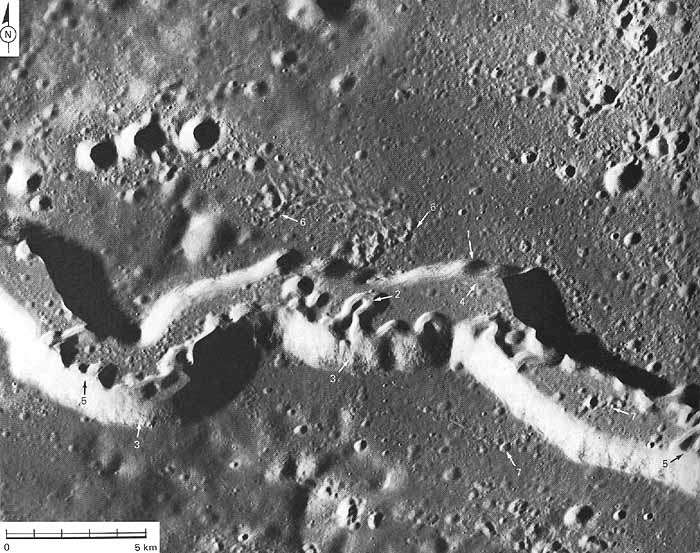
Figure 11: Nested channels
Here the crater (Fig. 12), 100km in diameter, has been filled with lava in which a sinuous rille has developed.
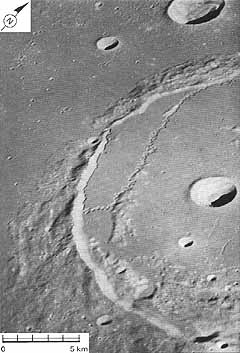
Figure 12: Rille within flooded crater
The linear rilles, or graben, shown below (Fig. 13) cutting through both the mare surface and the crater, are about one kilometre wide. These are thought to be the result of tensional forces stretching the surface and are most common near the borders of circular maria.
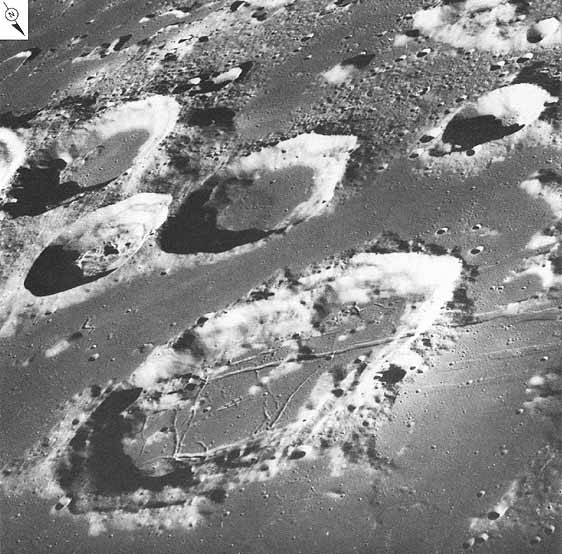
Figure 13: Graben cutting crater
This photo (Fig. 14) shows about 120 km of a 300 km rille, another fault trough or graben caused by sinking between two parallel faults.
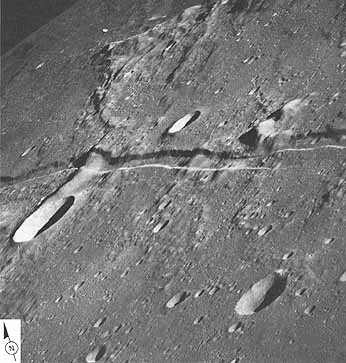
Figure 14: Linear rille
Conclusions
The main features of the Moon are impact craters spanning the full range of sizes and large scale basaltic lava flows with associated channels and faulting. The very slow rate of erosion, limited lateral movement of debris, and lack of surface cover such as vegetation have preserved and left visible landforms dating back billions of years and thus make the Moon very useful for studying the early history of the Solar System.
References
Masursky, Harold; Colton, G. W. & El-Baz, Farouk (eds.), Apollo over the Moon: A View from Orbit, NASA SP-362, 1978. Online Version
Further Reading
The following additional books also contain numerous photographs with explanatory comments by lunar geologists. Although out of print, used copies may be available.
Kosofsky, L.J.; El-Baz, Farouk, The Moon as Viewed by Lunar Orbiter, NASA SP-200, 1970.
Lowman, Paul D, Lunar Panorama: A Photographic Guide to the Geology of the Moon, Weltflugbild Reinhold A. Muller, 1969.
Photo Sources
All photos originate from NASA, mainly Apollo but some from the earlier Lunar Orbiters.The following online collections were used:
Apollo Over The Moon: A View From Orbit
 GeologyRocks
GeologyRocks Send to friend
Send to friend